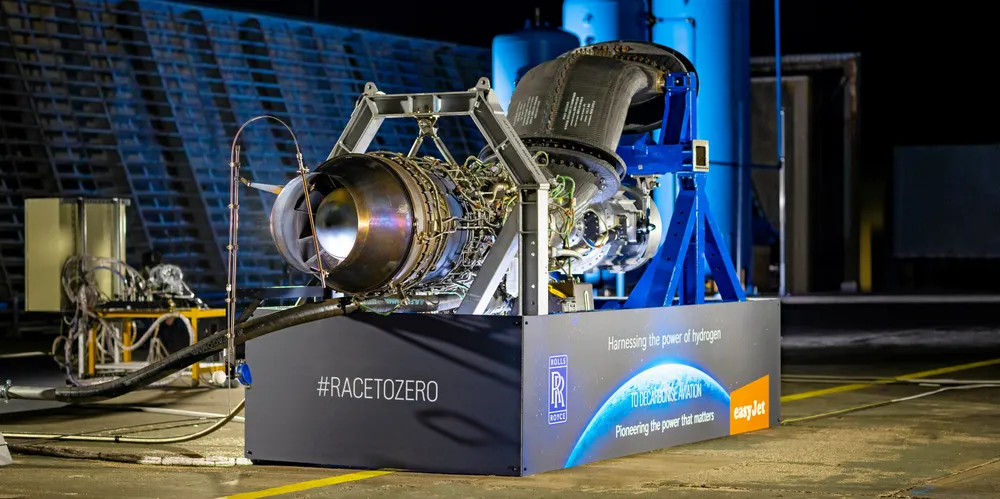'Most potential' | EasyJet makes 'multi-million' dollar bet on hydrogen-powered airplanes
Short-haul European airline ploughs cash into Rolls Royce’s H2 jet engine development for 2050 net-zero plan — but calls for policy support

But the firm also says that the aviation industry can’t achieve its decarbonisation goals without policy and financial support for zero-emissions aircraft.
Roadmap
EasyJet’s decision to dump its relative neutrality on zero-emissions technology, appears to be the result of its partnership with UK engineer Rolls-Royce, with which it has been developing a jet engine capable of burning liquid hydrogen.
The UK-based airline now plans to plough more cash into the project — a “multi-million pound” figure (£1 = $1.07 at time of writing), the company said, without giving any more details — which is set to begin its first ground tests imminently.
The plan is to use a combination of biomass-derived sustainable aviation fuels (SAFs), new fuel-efficient aircraft and AI-assisted operational efficiencies such as landing optimisation to cut carbon emissions by 35% (compared to 2019 levels) by 2035, before progressing to a second stage of emissions reduction that includes zero-emissions aircraft.
The company hasn’t made an estimate as to how much hydrogen it would need after 2035 — which is when Rolls-Royce says its hydrogen-fuelled engine will be ready for market. Aircraft maker Airbus also says it will have its first hydrogen-powered aircraft ready after 2035.
Neither has EasyJet made clear whether it plans to use green hydrogen made with renewables or blue hydrogen derived from fossil gas and carbon capture and storage.
But the news of the airline’s hydrogen plans was not met with enthusiasm by everyone, including Bernard Dijk van, aviation expert at the Hydrogen Science Coalition, who pointed out in an online post that the cryogenic tanks required to keep hydrogen liquid at minus 253℃ would reduce the space on the aircraft by 15-30% — at a cost to consumers.
But although hydrogen will be top of its zero-emissions priorities, Easyjet says it plans to continue its work on other technologies. It has already purchased enough SAFs to meet its projected needs for the next five years, from its supplier Q8Aviation, and the company’s “partner” Wright Electric plans next year to test the 2MW motor for its 186-seater electric plane concept.
Plea for government support
The remaining 22% of EasyJet’s 2050 emissions would be offset by direct-air carbon capture and storage (DACCS), a nascent and uncommercialised technology that aims to capture carbon from the air and store it underground. EasyJet and Airbus signed a letter of intent in July to work on the technology, but neither company has yet publicly committed funds to it.
And alongside the suite of ambitions came a plea for policy and financial support from governments.
“Decarbonising aviation is a major undertaking for which the whole sector is coming together, but we also require the support from UK and European governments to help us achieve net-zero and we have clearly outlined the actions needed from them,” said Johan Lundgren, EasyJet’s chief executive officer.
The company’s wishlist includes a regulatory framework to incentivise zero-emissions aircraft production, financial incentives for zero-carbon technology, and the expansion of the UK and EU emissions trading systems to include all European and UK departures (not just those in the European Union), ringfencing some of the cash from this for decarbonising aviation.
EasyJet also wants aviation to be incorporated more fully into the EU and UK’s hydrogen strategies, and for both governments to define hydrogen as an SAF equivalent (currently the term covers fuels of biological origin only), and to link passenger taxes to emissions to push consumers towards greener options.
(Copyright)